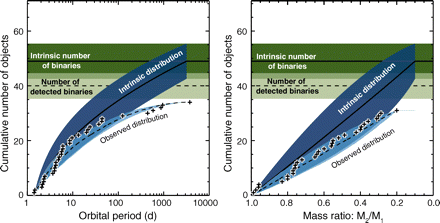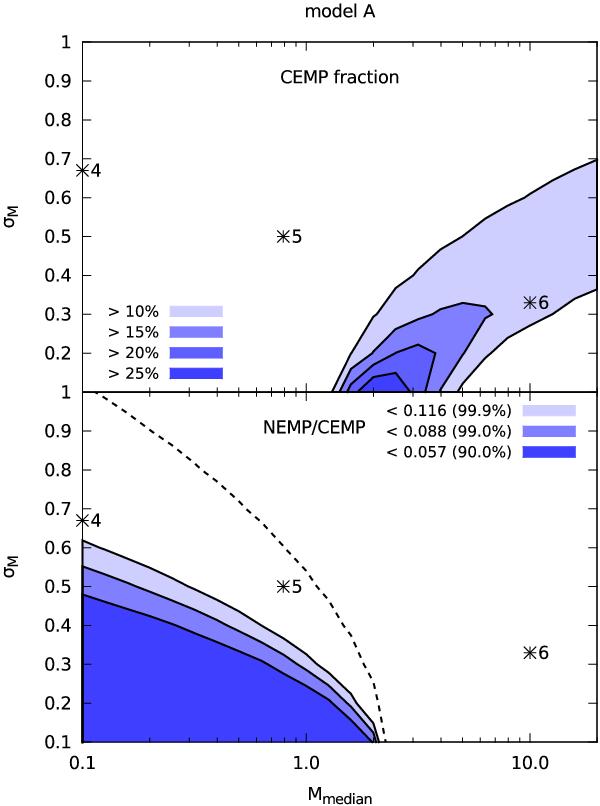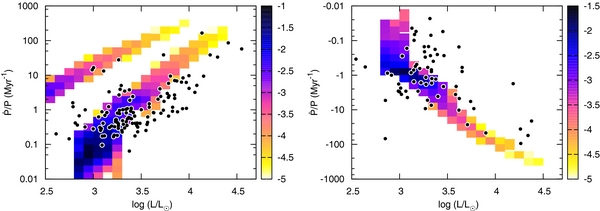|
|
2018 2017 2016 2015 2014 2013 2012 2011 2010 2009 2008 2007 2006 2005 2004 2003 PhD
| Binary Interaction Dominates the Evolution of Massive Stars |
| Sana, H.; de Mink, S. E.; de Koter, A.; Langer, N.; Evans, C. J.; Gieles, M.; Gosset, E.; Izzard, R. G.; Le Bouquin, J.-B.; Schneider, F. R. N. |
|
The presence of a nearby companion alters the evolution of massive stars in binary systems, leading to phenomena such as stellar mergers, x-ray binaries, and gamma-ray bursts. Unambiguous constraints on the fraction of massive stars affected by binary interaction were lacking. We simultaneously measured all relevant binary characteristics in a sample of Galactic massive O stars and quantified the frequency and nature of binary interactions. More than 70% of all massive stars will exchange mass with a companion, leading to a binary merger in one-third of the cases. These numbers greatly exceed previous estimates and imply that binary interaction dominates the evolution of massive stars, with implications for populations of massive stars and their supernovae. |

Cumulative number distributions of logarithmic orbital periods (left) and mass ratios (right) for our sample of 71 O-type objects, of which 40 are identified binaries.
|
|
| The occurrence of nitrogen-enhanced metal-poor stars: implications for the initial mass function in the early Galactic halo |
| Pols, O. R.; Izzard, R. G.; Stancliffe, R. J.; Glebbeek, E. |
|
Most carbon-enhanced metal-poor (CEMP) stars are thought to result from past mass transfer of He-burning material from an asymptotic giant branch (AGB) star to a low-mass companion star, which we now observe as a CEMP star. Because AGB stars of intermediate mass efficiently cycle carbon into nitrogen in their envelopes, the same evolution scenario predicts the existence of a population of nitrogen-enhanced metal-poor (NEMP) stars, with [N/Fe] > 1 and [N/C] > 0.5. Such NEMP stars are rare, although their occurrence depends on metallicity: they appear to be more common at [Fe/H] < - 2.8 by about a factor of 10 compared to less metal-poor stars. We analyse the observed sample of metal-poor stars with measurements of both carbon and nitrogen to derive firm constraints on the occurrence of NEMP stars as a function of metallicity. We compare these constraints to binary population synthesis calculations in which we vary the initial distributions of mass, mass ratio and binary orbital periods. We show that the observed paucity of NEMP stars at [Fe/H] > - 2.8 does not allow for large modifications in the initial mass function, as have been suggested in the literature to account for the high frequency of CEMP stars. The situation at lower metallicity is less clear, and we do not currently have stellar models to perform this comparison for [Fe/H] < -2.8. However, unless intermediate-mass AGB stars behave very differently at such low metallicity, the observed NEMP frequency at [Fe/H] < -2.8 appears incompatible with the top-heavy forms of the initial mass function suggested in the literature. |

Dependence of the CEMP fraction (upper panel) and the fraction fNEMP of NEMP stars among all CEMP+NEMP stars (lower panel) for our default model A, as a function of the median mass and dispersion for a log-normal IMF.
|
|
| On the nature and detectability of Type Ib/c supernova progenitors |
| Yoon, S.-C.; Gräfener, G.; Vink, J. S.; Kozyreva, A.; Izzard, R. G. |
|
|
The progenitors of many Type II supernovae have been observationally identified but the search for Type Ibc supernova (SN Ibc) progenitors has thus far been unsuccessful, despite the expectation that they are luminous Wolf-Rayet (WR) stars. We investigate how the evolution of massive helium stars affects their visual appearances, and discuss the implications for the detectability of SN Ibc progenitors. Evolutionary models of massive helium stars are analysed and their properties compared to Galactic WR stars. Massive WR stars that rapidly lose their helium envelopes through stellar-wind mass-loss end their lives when their effective temperatures - related to their hydrostatic surfaces - exceed about 150 kK. At their pre-supernova stage, their surface properties resemble those of hot Galactic WR stars of WO sub-type. These are visually faint with narrow-band visual magnitudes Mv = -1.5 to -2.5, despite their high bolometric luminosities (log L/L⨀ = 5.6 to 5.7), compared to the bulk of Galactic WR stars (Mv < -4). In contrast, relatively low-mass helium stars that retain a thick helium envelope appear fairly bright in optical bands, depending on the final masses and the history of the envelope expansion during the late evolutionary stages. We conclude that SNe Ibc observations have so far not provided strong constraints on progenitor bolometric luminosities and masses, even with the deepest searches. We also argue that Ic progenitors are more challenging to identify than Ib progenitors in any optical images.
|
| Classical Cepheids Require Enhanced Mass Loss |
| Neilson, H.R.; Langer, N.; Engle, S.G.; Guinan, E.; Izzard, R.G. |
| Measurements of rates of period change of Classical Cepheids probe stellar physics and evolution. Additionally, better understanding of Cepheid structure and evolution provides greater insight into their use as standard candles and tools for measuring the Hubble constant. Our recent study of the period change of the nearest Cepheid, Polaris, suggested that it is undergoing enhanced mass loss when compared to canonical stellar evolution model predictions. In this work, we expand the analysis to rates of period change measured for about 200 Galactic Cepheids and compare them to population synthesis models of Cepheids including convective core overshooting and enhanced mass loss. Rates of period change predicted from stellar evolution models without mass loss do not agree with observed rates, whereas including enhanced mass loss yields predicted rates in better agreement with observations. This is the first evidence that enhanced mass loss as suggested previously for Polaris and δ Cephei must be a ubiquitous property of Classical Cepheids.
|

Predicted positive (left) and negative (right) rates of period change as a function of stellar luminosity.
|
|
|
|
|
|
|
|
|
|
|
|
|
|
|
|
|
|
|
|
|
|
|
|

